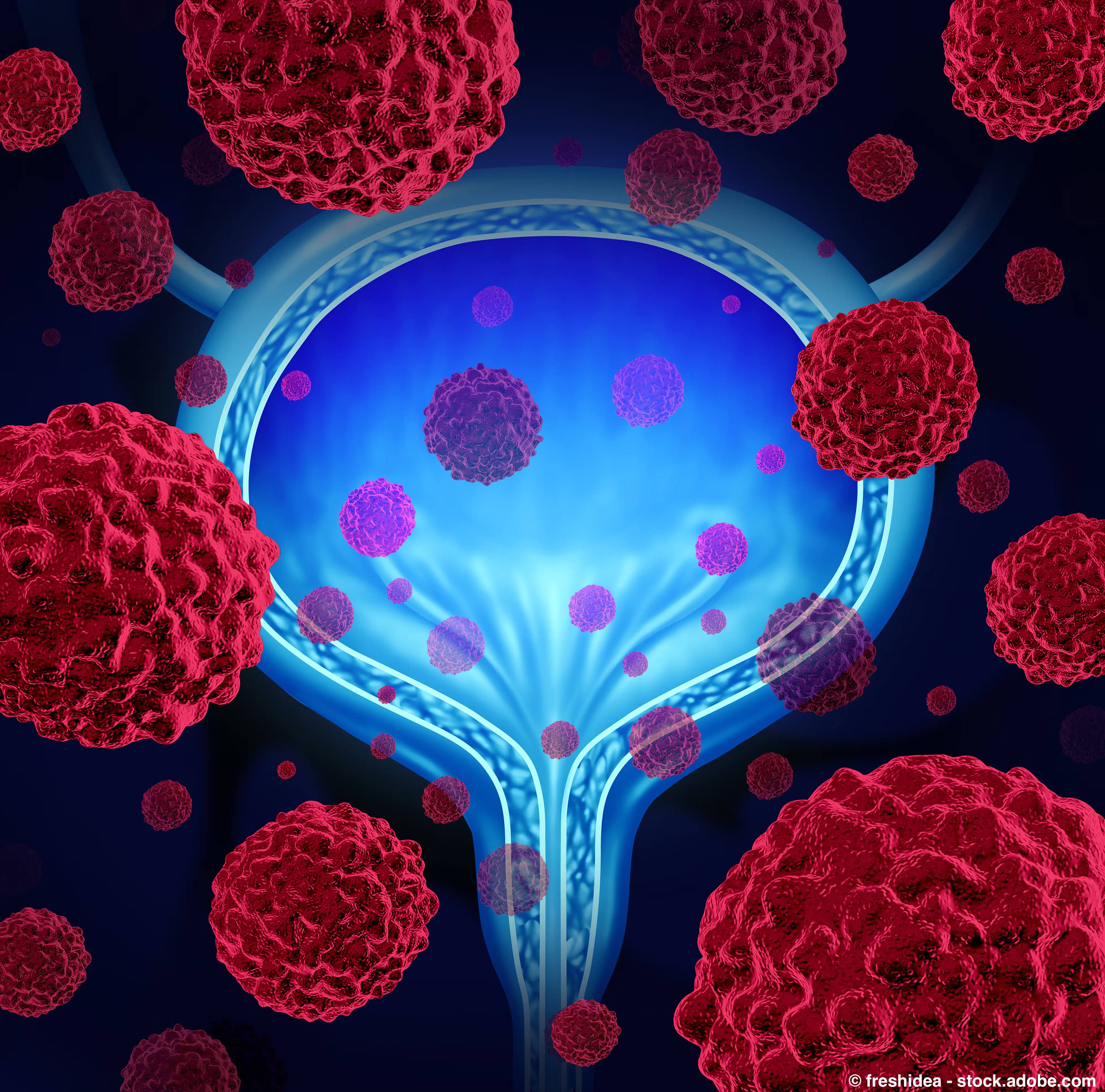A new delivery system of gemcitabine called TAR-200 resulted in promising responses in patients with high-risk non–muscle-invasive bladder cancer (NMIBC) that was not responsive to Bacillus Calmette–Guérin therapy, according to findings from the SunRISe-1 clinical trial.
Data from the trial were recently presented at the 2024 American Urological Association Annual Meeting.
Study Highlights:
- TAR-200 is a new treatment for high-risk bladder cancer that hasn't responded to other treatments. It is a targeted releasing system designed to deliver gemcitabine directly into the bladder.
- In a clinical trial, approximately 82.8% of patients achieved a complete response, meaning there were no signs of cancer after treatment.
- The treatment appears to be well-tolerated. Most patients experienced minimal side effects, and no patients experienced a progression to metastatic disease.
- Nearly three-fourths of patients continued to respond to treatment with TAR-200 18 months after being treated.
When researchers last collected data on Jan. 2, 2024, 82.8% of response-evaluable patients who were treated with TAR-200 alone (58 patients) achieved complete response (CR; indicating that there are no signs of cancer), according to an assessment by a panel of experts who do not know which therapies patients received. Further, according to data analyzed by the treating physicians, the CR rate was 86.2%.
Additionally, the estimates for CR rate at six and 12 months were 75.7% and 61.9%, respectively. Nearly all (98%) CRs were achieved at week 12, which is the first point at which investigators investigated patients’ disease.
Additionally, most responses (85%) were ongoing at the time data was collected. Four of five patients who completed two years of treatment remained in response; this indicated that their disease continued to shrink or was not growing.
Notably, no responders (48 patients) experienced disease progression to muscle-invasive bladder cancer or metastatic disease.
Estimated duration of response (DOR; how long a drug keeps cancer under control) rates were:
- 87% at six months
- 74.6% at 12 months
- 74.6% at 18 months
Only one responder underwent radical cystectomy, which is the surgical removal of the entire bladder and surrounding lymph nodes.
“Radical cystectomy is a life-changing operation with considerable morbidity and quality of life considerations. Moreover, there is a 90-day mortality risk of up to 8%. As such, there is a high unmet need for bladder-sparing therapies in this population,” Dr. Joseph Jacob an associate professor of urology at SUNY Upstate Medical University Hospital in Syracuse, New York, said during a presentation of the data. “TAR-200 is a novel targeted releasing system designed for sustained local release of gemcitabine into the bladder. It is placed in the clinic with a urinary placement catheter, and it takes approximately two to three minutes. Removal is with a cystoscope and is very similar to how you would remove a ureteral stent. In my practice, my nurse practitioner places the TAR-200 devices and removes them.”
About the SunRISe-1 Trial
SunRISe-1 enrolled patients with high-risk NMIBC carcinoma in situ (CIS) with or without papillary disease. Of note, papillary disease is a cancer growth pattern where the tumors appear to have thin, finger-like projections, according to the American Cancer Society.
Eligible patients also needed to have an ECOG performance status of 2 or less, which indicates that they could perform all or most of their daily tasks independently; had persistent or recurrent disease within 12 months of the completion of Bacillus Calmette–Guérin; and were unresponsive to Bacillus Calmette–Guérin and not receiving radical cystectomy.
Patients were randomly assigned to receive one of three treatment regimens:
- TAR-200 plus cetrelimab (cohort 1; 55 patients)
- TAR-200 monotherapy (cohort 2; 85 patients)
- cetrelimab monotherapy (cohort 3; 28 patients).
There was also a fourth cohort of approximately 50 patients with papillary-only high-risk NMIBC who were treated with TAR-200 monotherapy.
TAR-200 was administered every three weeks for the first 24 weeks, then every 12 weeks through week 96. Findings from cohort 2 were presented during the 2024 AUA Annual Meeting.
The main study goal in cohorts 1 through 3 was overall CR rate. Key secondary end points included DOR, overall survival (OS; time from treatment until death of any cause), safety and tolerability. The primary end point in cohort 4 was a 12-month disease-free survival rate.
More Study Findings
Additional findings from a subgroup analysis showed that the high CR rate with TAR-200 monotherapy was consistent across patient subgroups.
Regarding safety, most side effects were grade 1 or 2 (mild to moderate) in severity and occurred within 12 weeks of treatment initiation. Most patients experienced any-grade side effects (85.9%) and 22.4% experienced a grade 3 or higher (moderate to severe) side effect.
Common side effects of any grade included frequent/abnormal urination (35.3%), painful urination (29.4%), sudden, strong urges to urinate (15.3%) and urinary tract infection (15.3%). Moderate to severe side effects included urinary tract pain (2.4%), as well as bladder pain, kidney impairment, inability to urinate or urinate completely, sepsis caused by an infection in the urinary tract, urinary tract infection and painful urination which occurred in one patient each. Four patients discontinued treatment due to side effects and there were no treatment-related deaths.
In December 2023, the FDA granted breakthrough therapy designation to TAR-200 to treat patients with Bacillus Calmette-Guérin–unresponsive, high-risk NMIBC who are not candidates for or opted not to receive radical cystectomy.
For more news on cancer updates, research and education, don’t forget to subscribe to CURE®’s newsletters here.




